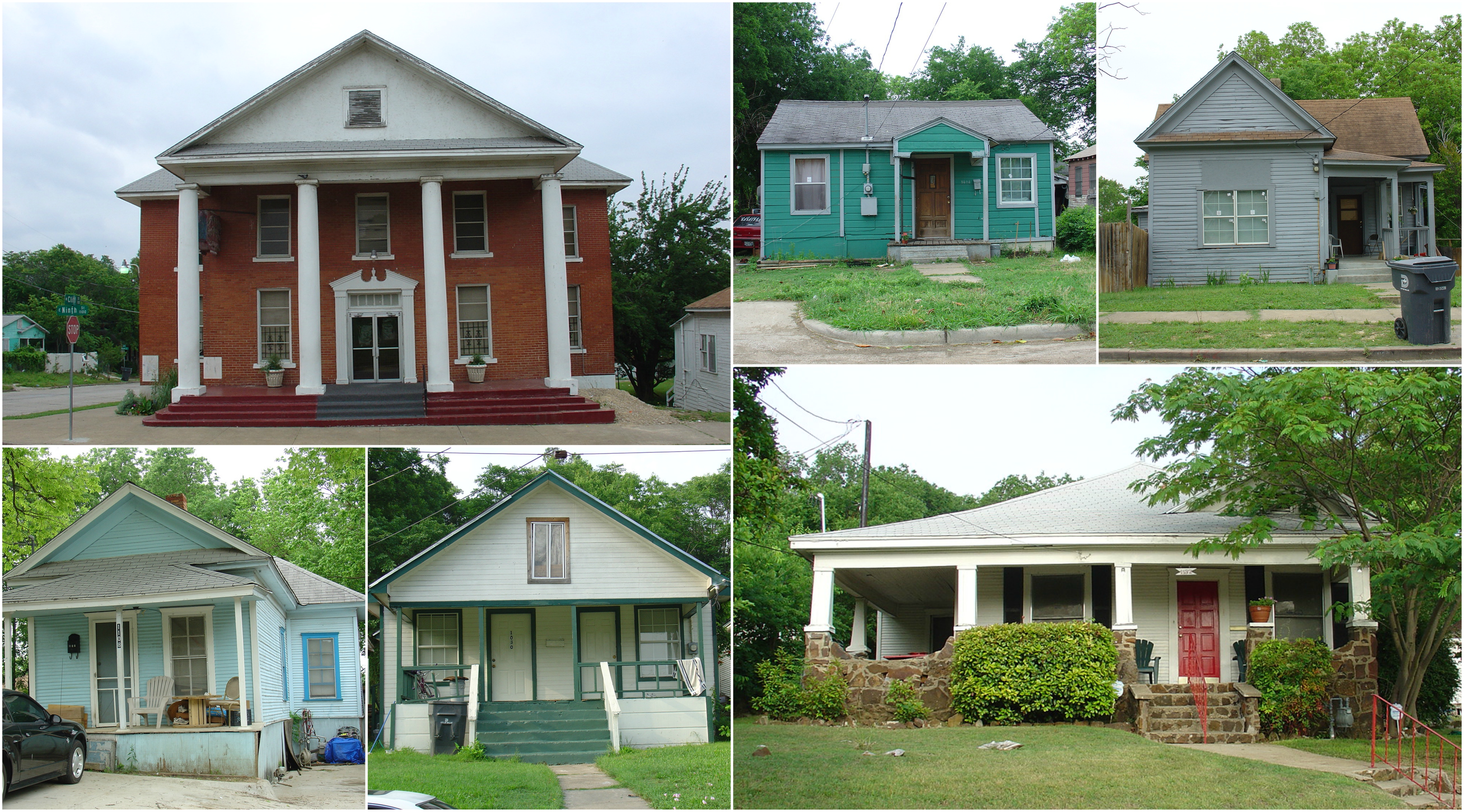Tenth Street Historic District

Dallas' 12th historic district was adopted in 1993. One of the only remaining intact Freedman's Towns in the nation. It is a cohesive collection of modest folk and vernacular dwellings dating from the late nineteenth to early twentieth centuries. In this neighborhood there are 257 domestic structures, four commercial structures, three institutional structures and one cemetery.
Freed slaves began living in Tenth Street after the Civil War ended. Many were thought to be former slaves of William Brown Miller, a prominent Dallas cotton farmer. In 1880 the Elizabeth Chapel was established, and in 1886 a school opened at what is now the corner of 12th and Lancaster Streets. Extensive settlement began when T.L. Marsalis platted the neighborhood in 1890. Tenth Street Ordinance #22852
Tenth Street Ordinance #22852
Designations: Dallas Landmark District, National Register of Historic Places (1994), State Historic Marker Program (2015).
Further Research:
Tenth Street Landmark Nomination Report